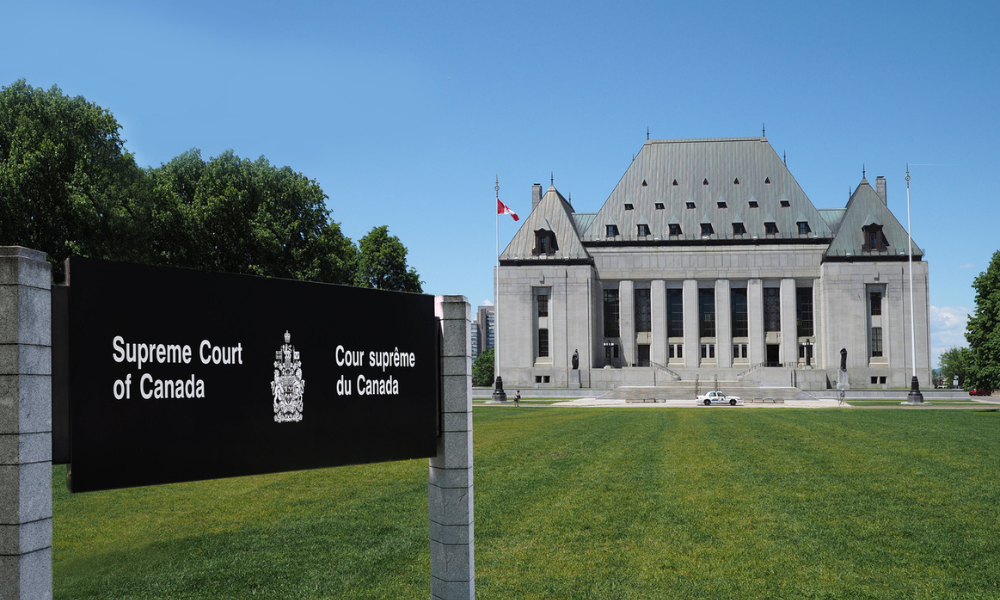For better or worse, the personal injury firm Diamond & Diamond has become the poster child for referral fees. The Toronto-based firm, with its trademarked 1-800-567-HURT phone line and “consultation” offices stretching from Timmins to Windsor, Ont., advertises heavily across the province and has been known to use models in skin-tight pants and shirts to plug its legal services, much to the chagrin of many personal injury lawyers.
The Toronto-based firm, with its trademarked 1-800-567-HURT phone line and “consultation” offices stretching from Timmins to Windsor, Ont., advertises heavily across the province and has been known to use models in skin-tight pants and shirts to plug its legal services, much to the chagrin of many personal injury lawyers.
The firm and its principal Jeremy Diamond were recently the subject of an unflattering Toronto Star profile about his high-flying life of sports sponsorships, fast cars and the firm’s business model of spending hundreds of thousands of dollars advertising heavily, often referring out files it receives to other lawyers for a fee, though it has a number of lawyers working at the firm. The simple reality is that the firm has successfully monetized the referral process.
Adam Wagman, head of the Ontario Trial Lawyers Association, was quoted as saying that the Diamond firm has “absolutely changed our industry and it’s changed the way people find lawyers.”
That’s true. Like it or not, Diamond has figured out that if you control client intake, you control the money. That’s not a novel idea, it’s a classic rainmaker strategy, and one employed at many professional service firms. It’s just that the business rainmakers usually bring in is handled internally and not farmed out to competing firms.
Moreover, Diamond’s marketing approach isn’t much different from 20 years ago, when personal injury lawyers advertised heavily in the Yellow Pages. Remember them? They were the primary tool consumers used to find lawyers.
However, changes to law society advertising rules and the Internet has turned that old way of marketing legal services on its head.
Billboards, TV, radio and social media advertising are the new Yellow Pages and they break through the geographical limits imposed by a telephone book.
They allow a law firm like Diamond to exploit a very real problem — the lack of consumer knowledge about legal services and how to find a good lawyer. On that front, the legal business isn’t much different from trades and issues consumers face when looking for a good plumber or electrician. The public relies on word of mouth, Kijiji and hope.
Some lawyers are crying foul over the business practice deployed by firms like Diamond, which leverage a big advertising budget and operate like a legal brokerage house.
The result is that lawyer advertising, which is only a few decades old, is once again drawing regulator scrutiny.
The Law Society of Upper Canada’s Professional Regulation Committee noted last spring that advertising complaints rose to 141 in 2015 from 115 in 2011.
Part of the problem is likely professional jealousy and complaints from personal injury lawyers who didn’t think of using a similar model first and don’t know how to compete in the new reality. Regardless, the PRC has been studying advertising and fee arrangements, including contingency and referral fees.
One issue is that referral fees seem to be climbing to as much as 25 or 30 per cent from 10 to 15 per cent, which eats into the contingency fee and leaves less for the lawyer actually doing the work on the file. The concern is that hampers a lawyer’s ability to take a matter to trial.
Malcolm Mercer, who chairs the PRC, says the rise in referral fee rates is “a concern.” As well, “it seems that there is relatively little transparency around referral fees to consumers.”
At press time, the PRC expected to bring forward its findings, dealing with advertising and referral fees at Convocation in late February.
How far the law society goes remains to be seen. It’s unlikely to kill referral fees, since they encourage lawyers to pass on work that they are not qualified to do, which is in the client’s interest.
As well, the society doesn’t want to become advertising copy police. Nor can it put the advertising genie back in the bottle. As Mercer notes, “That doesn’t work.”
Competition law also hamstrings the law society when it comes to issues such as fee setting.
What it can and likely will do is set tighter parameters around referral fees and disclosure and tackle misleading advertising.
A good place to start would be policing how lawyers use out-of-control rating services and award programs in their marketing, most of which are specious and based on little qualitative evidence. They are misleading to the public and offer little value.
Social media, websites and the Internet have changed legal marketing for the better from the consumer standpoint. They can now drill down into the profession deeper than they ever could.
While lawyers might not like competing with a business model like Diamond & Diamond, it’s part of the new legal reality. The challenge for lawyers is figuring out how to reach the same audience with a better message and differentiating their firm, not banning the message entirely. It’s called competition. If that doesn’t work, then maybe they need to pay a referral fee.
Jim Middlemiss is a principal at WebNewsManagement.com.








